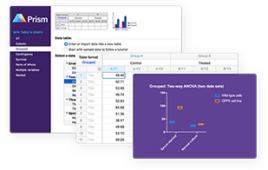Twin Star Explosions Fascinate Astronomers
Scientists using NASA’s Swift satellite stumbled upon a rare sight: two supernovas side by side in one galaxy. Large galaxies typically play host to three supernovas per century. Galaxy NGC 1316 has had two supernovas in less than five months, and a total of four supernova in 26 years, as far back as the records go. This makes NGC 1316 one of the most prodigious known producer of supernovas. An image of the two supernovas side by side in the galaxy NGC 1316 is pictured here. The first supernova, still visible on the “right” in the image, was detected on June
 |
19, 2006, and was named SN 2006dd. The second supernova, on the immediate “left” in the image, was detected on November 5 and has been named SN 2006mr. (Other objects in the image include a central bright spot, which is the galaxy core, and a bright object to the far left, like an earring, which is a foreground star.) NGC 1316, a massive elliptical galaxy about 80 million light years way, has recently merged with a spiral galaxy. Mergers do indeed spawn supernovas by forcing the creation of new, massive stars, which quickly die and explode. Yet all four supernovas in NGC 1316 appear to be Type Ia, a variety previously not associated with galaxy mergers and massive star formation. Scientists are intrigued and are investigating whether the high supernova rate is a coincidence or a result of the merger. Swift was launched two years ago, on November 20, 2004, was fully operational by January 2005, and since then has observed more than 200 gamma-ray bursts plus more than a thousand other astronomical objects. Swift carries three main instruments: the Burst Alert Telescope, the X-ray Telescope, and the Ultraviolet/Optical Telescope. Swift’s gamma-ray detector, the Burst Alert Telescope, provides the rapid initial location and was built primarily by the NASA Goddard Space Flight Center in Greenbelt and Los Alamos National Laboratory and constructed at GSFC. Swift’s X-Ray Telescope and UV/Optical Telescope were developed and built by international teams led by Penn State and drew heavily on each institution’s experience with previous space missions. The X-ray Telescope resulted from Penn State’s collaboration with the University of Leicester in England and the Brera Astronomical Observatory in Italy. The Ultraviolet/Optical Telescope resulted from Penn State’s collaboration with the Mullard Space Science Laboratory of the University College-London. These three telescopes give Swift the ability to do almost immediate follow-up observations of most gamma-ray bursts because Swift can rotate so quickly to point toward the source of the gamma-ray signal. The spacecraft was built by General Dynamics.




